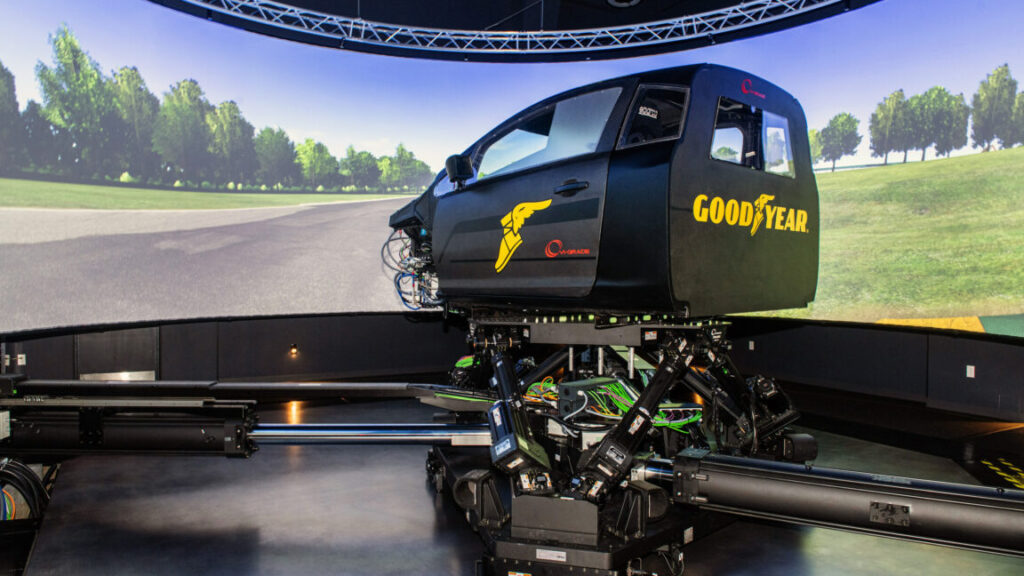Tire simulation is so good it’s replacing real-world testing
“If it’s a one-second maneuver, you want it to take one second, right? Those millions of degrees of freedom model do not necessarily execute in real time like that. So there’s a translation that has to happen to be able to drive the simulator,” Rohweder said.
Goodyear now has a pair of dynamic simulator centers, one in Akron, Ohio, which opened in 2021, and a second in Luxembourg, which opened in 2024.
The payoff is that it’s now much faster to iterate during development. “Back in the late ’90s, you could count on a half a dozen—maybe up to 10—physical iterations where you’re actually ordering a mold, making tires, and putting them on test. [If] you didn’t get the result, [you would] work your way back through,” Helsel said.
Over time, simulating the tire’s footprint allowed Goodyear to cut that in half, “and then since we’ve really been pushing this higher fidelity tire modeling and now into the simulator, we’ve cut that in half again,” Helsel said. Now, when working with a car manufacturer on tires for a specific model, “we only need basically a build and test confirmation physical [tire], so [we’re] down to one,” Helsel said.
That’s quite a savings—perhaps as many as 13,000 tires and 60,000 miles of test track driving that would otherwise be needed before everything was signed off.
“We’ve done variation in studies with [tire] sizes when we’re setting targets working with the manufacturer before they start the vehicle development,” said Rohweder. “Tire dimension is easy to adjust. Compound, major design changes—when you have the data and you prepare it, you can go into the simulator environment and quickly move around in the design space to find out what the driver feels is most effective and best for shooting on that target. So that’s why we say that the maturity of that first physical iteration is really the benefit,” Rohweder said.
Tire simulation is so good it’s replacing real-world testing Read More »
